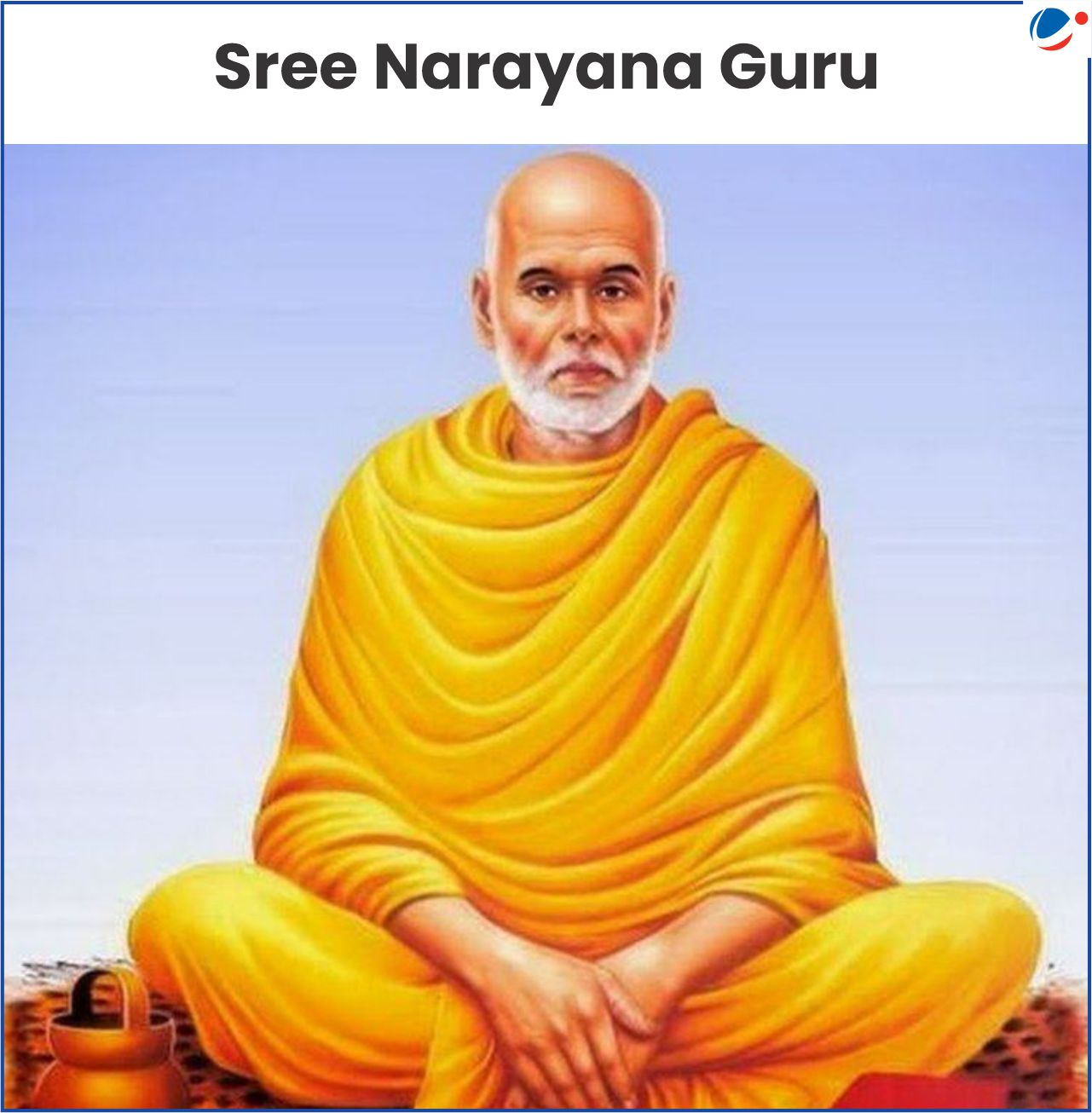
Introduction
India commemorated the centenary of the historic conversation between Sree Narayana Guru and Mahatma Gandhi, an event organized by the Sree Narayana Dharma Sanghom Trust.
The Conversation took place at Sivagiri Mutt in Kerala on 12 March 1925 during Mahatma Gandhi's visit. It was centred around Vaikom Satyagraha, religious conversions, non-violence, abolition of untouchability, attainment of salvation, the uplift of the downtrodden etc.
About Sree Narayana Naryan Guru (1856-1928)
- Born in the village of Chembazhanthi near Thiruvananthapuram, Kerala.
- Founded the Shree Narayana Dharma Paripalana Yogam (SNDP) in 1903 to advance social reform.
- Focused on addressing the social and educational backwardness of the Ezhavas and other marginalized communities.
- Authored works such as Nivritti Panchakam and Atmopadesa Satakam, significant texts in Advaita Vedanta philosophy.
- In 1888, Sri Narayana Guru consecrated a Shiva Linga at Aruvippuram.
Views of Sree Narayana Guru and Mahatma Gandhi on Various Aspects
Aspect | Sree Narayana Guru | Mahatma Gandhi |
Social Reform | Narayan Guru consider caste something as unnatural, artificial and therefore unreal. Thus, he proclaimed the word "One Caste, One Religion and One God". He believed that while affirmative action addresses economic gaps, it doesn't eliminate casteism. He advocated a gradual, educative approach "don't ask, tell, or don't think of caste"and removing caste references from official records. | Gandhiji was against untouchability. Yet, he believed in the Vamashrama system. He stated that different varnas (classes of people) did exist naturally. He believes that all types of men can be categorised under four broad occupations: teaching, defending, wealth producing and manual labour. |
Religious Views | He believed Hinduism was enough for spiritual growth but accepted that other religions could also lead to liberation. | Emphasized all religions as equal paths to truth. His concept of religion was deeply linked to morality and selfless service to humanity. He condemned politics separated of religion on the ground that it makes man corrupt, selfish, unreliable, materialistic and opportunistic. |
Temple Entry & Social Equality | Opened temples to all castes (e.g., Aruvippuram Movement); worked to break caste exclusivity in religious spaces. | Supported temple entry movements (like Vaikom Satyagraha) and fought for the rights of Dalits. |
Education | Considered education as the only means to human progress and prosperity and the supreme panacea for all social evils like superstitions and unhealthy tradition. He advocated equal opportunity for women and began the number of schools all over Kerala. | Advocated basic education (Nai Talim or Wardha Scheme of Basic Education) combining manual labour, craft work with intellectual growth for self-reliance and dignity. He stressed both vocational and literary training, advocating education in one's mother tongue over English. |
Conclusion
Sree Narayana Guru's vision of social equality and spiritual humanism remains deeply relevant today. His teachings inspire inclusive policies for gender empowerment, initiatives for caste inclusion, and environmental stewardship—guiding India toward a just, harmonious, and sustainable society rooted in dignity and respect.



